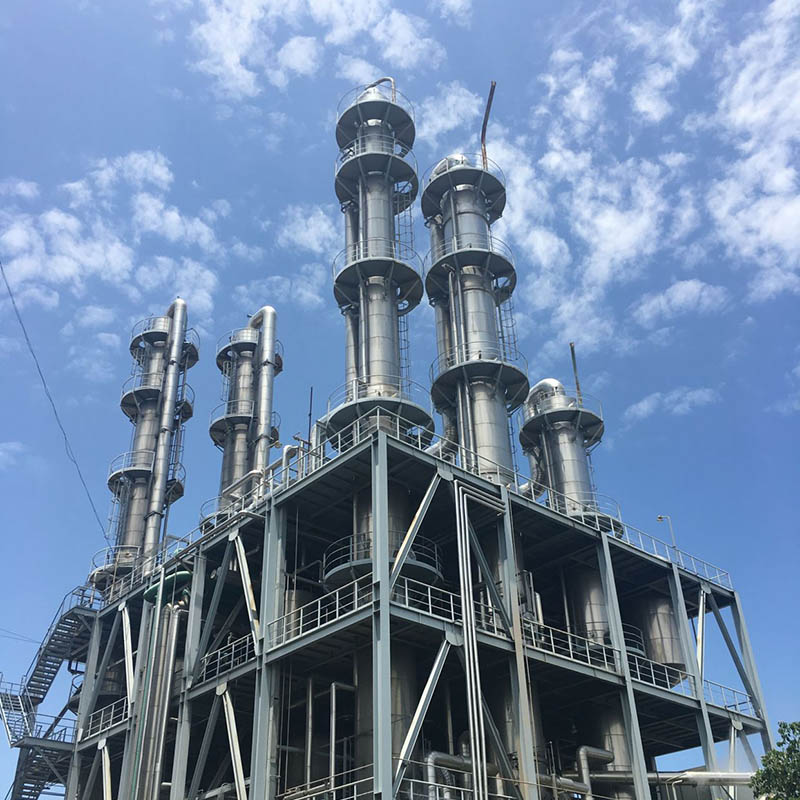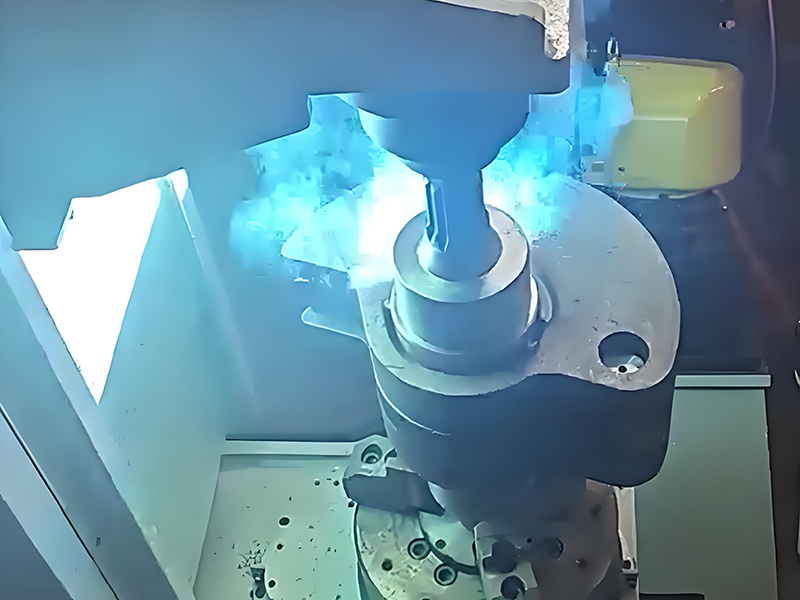Nitrogen (N₂) is an inert, colorless, odorless, and tasteless gas—properties that make it indispensable in industrial processes (e.g., inerting, blanketing, purging, cryogenic cooling) but also pose unique detection challenges. Unlike toxic gases (e.g., CO, H₂S), nitrogen’s primary hazard is oxygen displacement: leaks in confined spaces (e.g., tanks, labs, manufacturing cells) reduce ambient oxygen (O₂) levels below the safe threshold (19.5% by volume), leading to rapid asphyxiation—often without warning. Detecting nitrogen leaks promptly requires specialized methods, as the gas itself cannot be directly sensed by human perception or standard toxic gas detectors. This article outlines technical detection methodologies, equipment selection criteria, and best practices for mitigating nitrogen leak risks, aligned with industrial safety standards (e.g., OSHA, NFPA, ISO 23251).
1. Foundational Context: Why Nitrogen Leaks Are Hard to Detect
Nitrogen’s physical and chemical properties complicate direct detection:
– Inertness: It does not react with most materials or generate byproducts (e.g., no corrosive fumes, no exothermic reactions) that could serve as indirect leak indicators.
– Sensory Transparency: Being colorless, odorless, and tasteless, leaks cannot be identified by sight, smell, or taste—unlike gases such as ammonia (pungent) or chlorine (irritating).
– Atmospheric Abundance: Since N₂ makes up 78% of ambient air, measuring *absolute nitrogen concentration* is impractical; instead, detection relies on monitoring oxygen depletion (the direct consequence of nitrogen displacement) or using indirect leak-localization techniques.
The primary risk of undetected leaks is hypoxia:
– 19.5–23.5% O₂: Normal safe range for human occupancy.
– 16–19.5% O₂: Mild hypoxia (fatigue, dizziness, impaired judgment).
– 10–16% O₂: Severe hypoxia (confusion, loss of coordination, unconsciousness).
– <10% O₂: Fatal within minutes.
This risk is amplified in enclosed or poorly ventilated spaces (e.g., storage tanks, underground vaults, laboratory fume hoods) where nitrogen can accumulate rapidly.

2. Technical Detection Methodologies for Nitrogen Leaks
Nitrogen leak detection falls into two categories: oxygen depletion monitoring (to identify hazardous environments) and leak localization techniques (to pinpoint the source of the leak). Below are the most effective, industry-validated methods:
2.1 Oxygen Depletion Monitoring (Primary Safety Layer)
Since nitrogen leaks reduce oxygen levels, monitoring ambient O₂ is the most reliable way to detect hazardous nitrogen accumulation. This method does not directly “see” nitrogen but alerts users to the dangerous condition caused by leaks.
Key Equipment & Operation
– Fixed Oxygen Monitors: Installed in confined spaces or near nitrogen systems (e.g., piping, tanks). They use electrochemical or optical O₂ sensors to measure real-time O₂ levels and trigger alarms (audible, visual, or remote) when concentrations drop below 19.5% (OSHA’s action threshold).
– Electrochemical Sensors: Cost-effective, suitable for normal temperatures (-20°C to 50°C), and require periodic calibration (every 3–6 months).
– Optical (Luminance) Sensors: More durable, resistant to poisoning (e.g., from H₂S), and ideal for harsh environments (high humidity, corrosive gases); longer calibration intervals (6–12 months).
– Portable Oxygen Detectors: Handheld devices for spot checks (e.g., before entering a tank) or mobile monitoring. They typically use electrochemical sensors, have a compact design, and include features like low-battery alerts and data logging.
Applications
– Mandatory for confined spaces where nitrogen is used (OSHA 1910.146).
– Critical for cryogenic nitrogen systems (e.g., liquid nitrogen tanks), where leaks can rapidly vaporize and displace oxygen.
2.2 Leak Localization Techniques (Secondary: Pinpointing Sources)
Once an oxygen depletion alarm is triggered, these methods identify the exact leak location (e.g., valve stems, pipe joints, flange gaskets) to enable repairs.
2.2.1 Ultrasonic Leak Detectors
– Principle: High-pressure nitrogen leaks generate ultrasonic sound waves (20–100 kHz) as the gas escapes through small orifices—sound frequencies above human hearing range. Ultrasonic detectors amplify these waves and convert them into audible signals or visual readouts.
– Advantages:
– Non-invasive: Detects leaks from a safe distance (1–10 meters), avoiding exposure to hypoxic environments.
– Effective in noisy industrial settings: Filters out background noise (e.g., from pumps, motors) using frequency tuning.
– Limitations:
– Ineffective for low-pressure leaks (<1 bar): Insufficient turbulence to generate detectable ultrasonic waves.
– Reduced range in open areas: Sound waves dissipate quickly in unconfined spaces.
– Best For: High-pressure nitrogen systems (e.g., pipelines, pressure vessels), valve packs, and flange connections.
2.2.2 Infrared (IR) Thermal Imaging Cameras
– Principle: Nitrogen leaks (especially cryogenic liquid nitrogen, LN₂) cause localized temperature drops: LN₂ vaporizes at -196°C, cooling surrounding surfaces (e.g., pipes, valves) and condensing moisture from the air into frost or fog. IR cameras detect these thermal anomalies (cold spots) and display them as visual images.
– Advantages:
– Rapid area scanning: Covers large surfaces (e.g., entire pipe racks) in minutes, ideal for large-scale facilities.
– Non-contact: Eliminates the need to access hard-to-reach areas (e.g., overhead pipes).
– Limitations:
– Ineffective for ambient-temperature nitrogen leaks: No significant thermal contrast with surrounding air.
– Requires visible moisture: Works best in humid environments (moisture enhances thermal signature); less effective in dry conditions.
– Best For: Cryogenic nitrogen systems (e.g., LN₂ storage tanks, transfer lines) and cold nitrogen process equipment.
2.2.3 Soap Bubble Testing (Manual, Low-Cost)
– Principle: A soapy water solution (commercially formulated leak-detection soap or a 1:1 mixture of dish soap and water) is applied to potential leak points (e.g., valve threads, gasket seals). Escaping nitrogen gas forms persistent bubbles, indicating the leak source.
– Advantages:
– Low cost: Requires no specialized equipment beyond soap and a brush/spray bottle.
– High precision: Pinpoints small leaks (down to 1×10⁻⁶ std cm³/s) in low-pressure systems.
– Limitations:
– Labor-intensive: Requires manual application, making it impractical for large facilities.
– Risk of contamination: Soap residue can corrode sensitive components (e.g., electrical connections, precision valves) if not cleaned.
– Inaccessible areas: Cannot be used on overhead or enclosed components.
– Best For: Small-scale systems (e.g., laboratory gas lines, small valves), post-repair verification, or as a supplementary method for confirming leaks detected by ultrasonic/IR tools.
2.2.4 Tracer Gas Leak Detection (High-Precision, Industrial-Grade)
– Principle: For critical systems (e.g., semiconductor manufacturing, aerospace), nitrogen is mixed with a small amount of a traceable gas (e.g., helium, hydrogen) that is easy to detect. The system is pressurized, and a handheld tracer gas detector scans for escaping tracer gas—indicating a nitrogen leak.
– Advantages:
– Ultra-high sensitivity: Detects leaks as small as 1×10⁻¹² std cm³/s, suitable for vacuum systems or high-purity applications.
– Direct detection: Eliminates reliance on oxygen depletion or thermal cues.
– Limitations:
– High cost: Requires tracer gas and specialized detection equipment.
– System downtime: The nitrogen system must be temporarily taken offline to inject tracer gas.
– Best For: High-purity nitrogen systems (e.g., semiconductor wafer fabrication, pharmaceutical lyophilization) where even micro-leaks are unacceptable.
3. Equipment Selection Criteria for Nitrogen Leak Detection
Choosing the right detection tools depends on operational needs, environmental conditions, and risk levels. Key criteria include:
3.1 Sensitivity & Detection Range
– Oxygen Monitors: Select devices with a measurement range of 0–25% O₂ and a resolution of 0.1% O₂—critical for detecting gradual oxygen depletion (e.g., a 0.5% drop over 10 minutes).
– Ultrasonic Detectors: Opt for models with a frequency range of 20–100 kHz and adjustable sensitivity to filter out background noise (e.g., 60 dB in manufacturing plants).
– IR Cameras: Choose cameras with a thermal sensitivity of <0.1°C (at 30°C) to detect subtle temperature drops from LN₂ leaks.
3.2 Environmental Compatibility
– Temperature: For cryogenic applications, select oxygen monitors rated for -40°C to 85°C (to withstand LN₂ vapor exposure). For high-temperature environments (e.g., near furnaces), choose IR cameras with a temperature range of -20°C to 600°C.
– Humidity/Corrosion: In wet or corrosive areas (e.g., chemical plants), use IP67/IP68-rated equipment (waterproof, dustproof) and optical oxygen sensors (resistant to chemical poisoning).
– Explosive Environments: In hazardous locations (e.g., refineries), select intrinsically safe (IS) certified detectors (ATEX Zone 0/1, Class I Div 1) to prevent ignition of flammable gases.
3.3 Usability & Integration
– User-Friendliness: Prioritize devices with intuitive interfaces (e.g., touchscreens, one-button calibration) and clear alarms (e.g., 90 dB audible alerts, red LED beacons) to ensure quick recognition by untrained personnel.
– Data Logging & Remote Monitoring: For large facilities, choose fixed oxygen monitors with Modbus/Ethernet connectivity to integrate with SCADA systems—enabling real-time alerts to safety teams and historical data tracking for compliance audits.
– Portability: For fieldwork or confined space entry, select handheld detectors weighing <500 grams with long battery life (>8 hours of continuous use).
3.4 Compliance with Standards
Ensure equipment meets global safety certifications:
– OSHA 1910.146: Oxygen monitors must trigger alarms at ≤19.5% O₂ (lower explosive limit for oxygen).
– ISO 23251: For gas detection systems, ensures accuracy and reliability in industrial environments.
– ATEX/IECEx: For explosive atmospheres, confirms intrinsic safety.
4. Best Practices for Effective Nitrogen Leak Detection & Mitigation
Detection equipment alone is insufficient—implement these protocols to minimize risk:
4.1 Conduct Regular Inspections & Calibration
– Calibration: Oxygen monitors require monthly “bump tests” (exposure to a known gas concentration to verify alarm functionality) and quarterly full calibrations (using 0% O₂ and 20.9% O₂ standards). Ultrasonic detectors and IR cameras should be calibrated annually by the manufacturer.
– Pre-Use Checks: Before entering a confined space with nitrogen, use a portable oxygen detector to confirm O₂ levels are ≥19.5%. Inspect hoses, valves, and connections for physical damage (e.g., cracks, loose fittings) that could indicate leaks.
4.2 Train Personnel on Leak Response
– Hazard Awareness: Train employees to recognize hypoxia symptoms (dizziness, shortness of breath, confusion) and understand that nitrogen leaks are “silent”—no smell or sight cues.
– Emergency Protocols: Conduct quarterly drills on:
1. Evacuating hypoxic areas immediately (do not attempt to rescue others without self-contained breathing apparatus, SCBA).
2. Activating ventilation systems (e.g., exhaust fans, air purifiers) to restore oxygen levels.
3. Using leak-localization tools (e.g., ultrasonic detectors) to identify sources after the area is safe.
4.3 Implement Engineering Controls
– Ventilation: Install forced-air ventilation in confined spaces (e.g., tanks, labs) to maintain air exchange rates of ≥6 air changes per hour—reducing nitrogen accumulation.
– Pressure Monitoring: For nitrogen pipelines, install pressure gauges or flow meters; unexpected pressure drops indicate leaks.
– Secondary Containment: For LN₂ storage tanks, use double-walled vessels with pressure relief valves to contain leaks and prevent rapid vaporization.
4.4 Document & Review Leak Incidents
Maintain a leak log to track:
– Date/time of detection, location, and leak size.
– Mitigation actions taken (e.g., valve replacement, ventilation activation).
– Root cause analysis (e.g., worn gaskets, improper installation).
Review logs quarterly to identify trends (e.g., recurring leaks in a specific pipe section) and implement preventive maintenance (e.g., replacing aging hoses).




